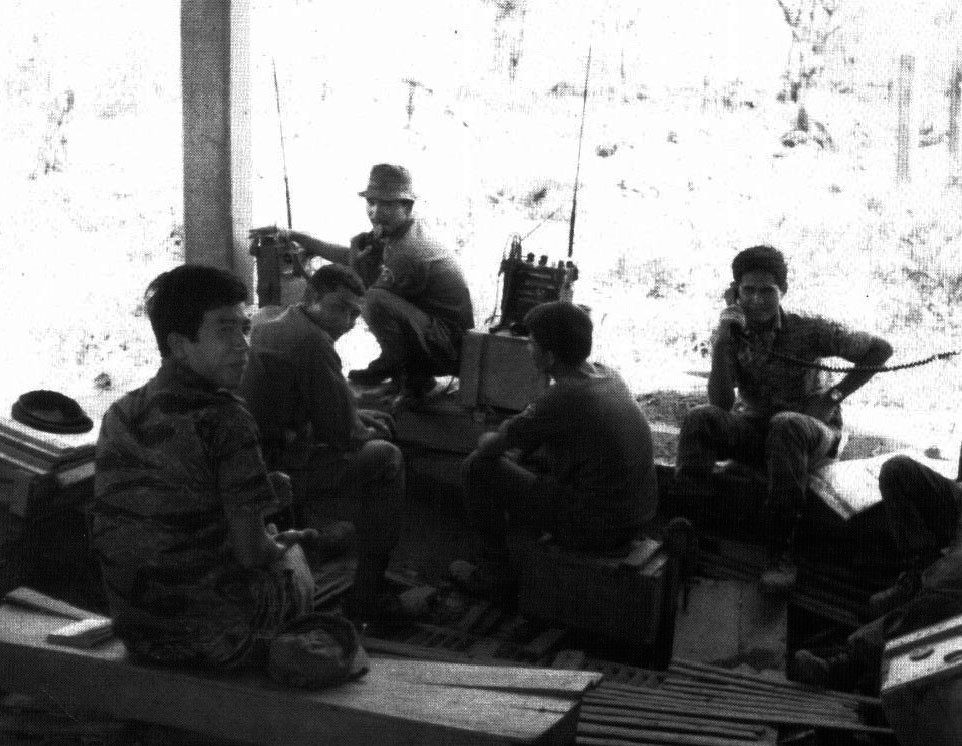On August 27, 1959, Cambodian police arrested three armed Viet Minh agents Kampot province. They would later be linked to the ‘Dap Chhuon plot to assassinate Sihanouk.
On August 27, 1987, the PRK under Heng Samrin announced a ‘policy on national reconciliation’, opening the way for talks between Phnom Penh and the factions of the ‘Government in Exile’
On August 27, 1989, Norodom Sihanouk resigned as president of FUNCINPEC. He remained a party member and ‘supreme commander’ of the military wing Armée National Sihanoukiste (ANS).
On August 28, 1989, French Foreign Minister Roland Dumas met with his counterparts from Japan, Australia, Canada and Vietnam in an an attempt to break the stalemate in peace discussions over the role of the Khmer Rouge in any future unity governments. The last rounds of the Paris peace talks got underway, with the New York Times describing the mood as ‘glum’.
August 28, 1990, after eight months of negotiations between China, France, Russia, the United Kingdom, and the United States, a framework for a comprehensive political settlement in Cambodia was agreed upon. However, the “Perm-5 Framework Document” called for “direct UN supervision or control” of the five key State Of Cambodia Ministries of Foreign Affairs, Information, Finance, Interior, and Defense- with the additional requirement that all Cambodian forces be disarmed. This would effectively have virtually displaced the whole incumbent government, and Phnom Penh vigorously objected.
On August 29, 1953, An agreement was signed between Cambodian Prime Minister Penn Nouth and French High Commissioner Risterucci, transferring judicial, police and security responsibilities to Cambodia by the French administration.
On August 29, 1978 Sisowath Noraknorin Dararith, described in the Khmer Rouge records as “a member of the Royal family, permanently residing at Lok Sang Hospital, Phnom Penh. Before 1975, she traded things at O Roussei market” was arrested by the Khmer Rouge and sent to camp S-21. She was executed on October 14, 1978.
On August 29, 1997, King Sihanouk returned from Beijing- where he had been since February. It was his first time in the country since political violence had ousted his son Prince Norodom Ranariddh. “I am the father of all Cambodian people,” the king told reporters when asked if he recognized Hun Sen’s new government.
On August 30, 1976, the Thai-Cambodian border committee agreed to reopen the border from from 6:00am to 6:00pm. Merchants needed permission from the Khmer Rouge. Thee trading firms, the Agricultural Credit Company, Colonate International Ltd and Patchanakarn Co. were approved to bring in goods to Democratic Kampuchea.
On August 30, 1989, the month-long Paris meetings concluded. 18 countries, the UN Secretary General and four Cambodian factions had reached some agreements on matters such as refugee return, but a binding settlement was not reached.
On August 31, 1973, communist forces launched a mortar and other heavy weapons attack on Kampong Cham town from the east side of the river, killing or wounding more than 100 residents. This turned into a large-scale assault the next day and quickly drove Khmer Republic forces into retreat, as Khmer Rouge shelling from both the west and the east continued along with street fighting. FANK troops, with navy supports, retook the town after 10 days of heavy fighting, but the town remained within range of Khmer Rouge mortars and artillery.
On August 31, 1999, after a week of negotiations between the UN and Cambodian government failed at reaching an agreement on how to set up a genocide tribunal, UN Assistant Secretary for Legal Affairs Ralph Zacklin said that if the Cambodian government did not meet conditions the UN believes
necessary for a tribunal, “the UN will simply cease to follow this process.”
On August 31, 2018, Australian filmmaker James Ricketson was sentenced to six years in jail by a Cambodian court for espionage. Ricketson, 69 at the time, was detained the day after he flew a drone at an opposition rally and convicted under a provision of the Cambodian law which forbids the collection of information harmful to national defense.
On September 1, 1946, parliamentary elections were held, with the Democratic Party (Pak Pracheatipatey) winning a majority of the seats in the National Assembly.
On September 1, 1973, following the end of the US Airforce bombing raids in August, and the attack on Kampong Cham, Khmer Rouge forces advanced to within 1.5 km of Phnom Penh. FANK 5th Brigade were rushed to the area, but lost control of Ponchentong airport and the far west of the city limits. FANK forces landing behind the lines managed to regain control of the area by September 14, but fighting around the airport continued for another two weeks.

On September 2, 2020, Kaing Guek Eav alias Duch died at the Khmer-Soviet Friendship Hospital.
